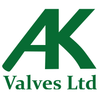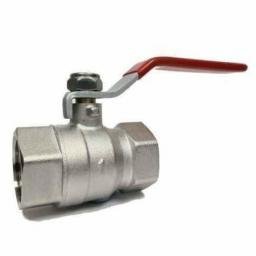Pneumatic Ball Valve types and uses
Intro
Pneumatic ball valves are an essential component in many industrial processes, providing reliable and efficient control of fluid flow. These valves come in a variety of types and designs, each with its own unique features and uses. One of the most commonly used types is the brass ball valve, known for its durability and resistance to corrosion. Another popular type is the actuated ball valve, which uses pneumatic power to open and close the valve, making it ideal for automation and remote control. In this blog post, we will explore the different types of pneumatic ball valves and their applications in various industries.Understanding the Basics of Pneumatic Ball Valves
Pneumatic ball valves may seem complex, but their basic operation is actually quite simple. These valves consist of a ball with a hole in the middle, which acts as the valve's opening and closing mechanism. When the ball is in the open position, fluid can flow through the valve, and when it is in the closed position, fluid is blocked.
One common type of pneumatic ball valve is the manual ball valve. As the name suggests, these valves are operated manually, using a handle or lever to turn the ball and control the flow of fluid. Whilst manual ball valves are effective for small-scale applications, they can be cumbersome and time-consuming to operate in larger industrial settings.
This is where the actuated ball valve comes in. With an actuated ball valve, the opening and closing of the valve is automated, using pneumatic power. This makes it ideal for applications that require frequent valve operation, or for situations where remote control is necessary. Actuated ball valves can be easily integrated into automated systems, increasing efficiency and reducing the need for manual intervention.
Understanding the basics of pneumatic ball valves is crucial for selecting the right valve for your specific application. Whether you opt for a manual ball valve or an actuated ball valve, understanding how these valves work will help you make informed decisions when it comes to choosing the right valve for your industrial processes.
Full Bore Pneumatic Ball Valves
Full bore pneumatic ball valves are a specific type of pneumatic ball valve that are designed to provide unobstructed flow through the valve. The term "full bore" refers to the fact that the diameter of the ball and the valve opening are the same size, allowing for maximum flow capacity. This makes full bore pneumatic ball valves ideal for applications where high flow rates are required.
The design of full bore pneumatic ball valves allows for minimal pressure drop, ensuring that there is little resistance to the flow of fluid. This not only improves efficiency, but also reduces the risk of blockages or obstructions in the system. Additionally, the unobstructed flow through the valve minimises the risk of cavitation, a phenomenon that can occur when fluid flows through a restricted opening and causes the formation of bubbles or vapour pockets.
Full bore pneumatic ball valves are commonly used in industries such as oil and gas, chemical processing, water treatment, and power generation. Their ability to handle high flow rates and resist blockages or obstructions makes them suitable for applications such as pipeline control, tank and vessel filling, and bulk material handling.
In summary, full bore pneumatic ball valves are a type of pneumatic valve that provide unobstructed flow and are ideal for applications where high flow rates are required. Their design minimises pressure drop, reduces the risk of cavitation, and makes them suitable for a wide range of industrial applications.
Reduced Bore Pneumatic Ball Valves
Reduced bore pneumatic ball valves are a specific type of pneumatic valve that are designed to provide controlled and precise flow regulation. Unlike full bore pneumatic ball valves, which have a ball and valve opening of the same size, reduced bore valves have a smaller ball and valve opening, resulting in reduced flow capacity. However, this reduction in size allows for more precise control over the flow of fluid.
These valves are commonly used in applications where precise flow regulation is crucial, such as in the pharmaceutical and food processing industries. The reduced bore design allows for more accurate dosing and metering of fluids, ensuring that the desired amount is delivered with precision. They are also commonly used in applications where space is limited, as their compact size allows for easy installation and integration into existing systems.
Reduced bore pneumatic ball valves are typically made from materials such as stainless steel or brass, which offer excellent resistance to corrosion and ensure the durability and longevity of the valve. They are also available in various actuation options, such as pneumatic, electric, or manual, allowing for flexibility in selecting the most suitable valve for the application.
In summary, reduced bore pneumatic ball valves offer precise flow control and are commonly used in industries where accurate dosing and metering are essential. Their compact size and variety of actuation options make them versatile and adaptable for a wide range of industrial applications.
Three-Way Pneumatic Ball Valves
Three-way pneumatic ball valves are a versatile type of valve that are designed to regulate the flow of fluids in three different directions. These valves have three ports, allowing for the diversion of fluid to different paths, depending on the valve's position. This makes three-way pneumatic ball valves ideal for applications that require switching between two different flow paths, or for controlling the flow between multiple components.
These valves are commonly used in industries such as chemical processing, water treatment, and HVAC systems. For example, in chemical processing, three-way pneumatic ball valves can be used to control the flow of different chemicals into a mixing tank, allowing for precise blending of materials. In HVAC systems, these valves can be used to divert the flow of hot or cold water to different areas of a building, enabling efficient temperature control.
Three-way pneumatic ball valves offer a high degree of control and flexibility in fluid flow regulation. With the ability to switch between different flow paths, these valves allow for complex fluid control strategies, ensuring optimal performance and efficiency. Additionally, these valves are typically made from durable materials such as stainless steel or brass, ensuring their longevity and resistance to corrosion.
In summary, three-way pneumatic ball valves provide the capability to control fluid flow in three different directions, making them ideal for applications that require switching between flow paths or controlling the flow between multiple components. Their versatility and durability make them suitable for a wide range of industrial applications.
V-Port Pneumatic Ball Valves
V-Port pneumatic ball valves are a specialised type of valve that offer precise control over fluid flow. These valves are named after their unique V-shaped ball design, which creates a V-shaped flow path when the valve is in the open position. This design allows for accurate flow control and modulation, making V-Port pneumatic ball valves ideal for applications that require precise control over flow rates and processes.
The V-shaped flow path created by these valves allows for increased control over the flow profile, providing a linear relationship between the valve position and the flow rate. This means that even small adjustments to the valve position result in proportional changes to the flow rate. This level of control is especially useful in applications that require accurate dosing, such as in the chemical and pharmaceutical industries.
V-Port pneumatic ball valves are commonly used in processes that involve mixing, blending, or proportioning fluids. For example, in the food industry, these valves can be used to accurately regulate the flow of ingredients into a mixing tank, ensuring precise and consistent product quality. In the water treatment industry, V-Port pneumatic ball valves can be used to control the flow of chemicals into water treatment systems, enabling efficient and accurate dosing.
In summary, V-Port pneumatic ball valves are a specialised type of valve that offer precise control over fluid flow. Their unique V-shaped ball design allows for accurate flow control and modulation, making them ideal for applications that require precise flow regulation. Whether in the food industry, water treatment, or other applications that require accurate dosing, V-Port pneumatic ball valves provide the control and reliability needed for optimal performance.
The Practical Applications of Pneumatic Ball Valves
Pneumatic ball valves have a wide range of practical applications across various industries. These valves provide efficient control of fluid flow, making them essential components in many industrial processes.
One common application of pneumatic ball valves is in the oil and gas industry. These valves are used in pipeline control, allowing for the smooth and efficient transportation of oil and gas. They also play a crucial role in tank and vessel filling, ensuring accurate and controlled flow rates. Additionally, pneumatic ball valves are commonly used in power generation plants, where they help regulate the flow of water or steam.
In the chemical processing industry, pneumatic ball valves are used for precise control over the flow of different chemicals. These valves enable accurate blending and mixing of materials, ensuring consistent product quality. Similarly, in the water treatment industry, pneumatic ball valves are used to control the flow of chemicals into water treatment systems, enabling efficient and accurate dosing.
Pneumatic ball valves are also employed in HVAC systems for temperature control. These valves can divert the flow of hot or cold water to different areas of a building, ensuring comfortable and energy-efficient conditions.
The practical applications of pneumatic ball valves extend to the food processing industry, where these valves provide accurate regulation of ingredient flow during mixing or blending processes. They are crucial in ensuring precise and consistent product quality.
Overall, the practical applications of pneumatic ball valves are vast and diverse. From oil and gas to chemical processing, water treatment, power generation, HVAC systems, and food processing, these valves play a crucial role in enhancing efficiency and control in industrial processes.
Safety Measures for Pneumatic Ball Valves
When working with pneumatic ball valves, it's important to prioritise safety to prevent accidents and ensure smooth operation. Here are some key safety measures to consider:
1. Lockout/Tagout Procedures: Before conducting any maintenance or repair work on pneumatic ball valves, make sure to follow lockout/tagout procedures. This involves isolating the valve from the energy source, securing it with locks or tags, and notifying all personnel of the ongoing work.
2. Regular Inspections: Regularly inspect the pneumatic ball valves for any signs of damage, wear, or leaks. This can help identify potential issues early on and prevent unexpected failures or accidents.
3. Proper Training: Ensure that all personnel who will be working with pneumatic ball valves are properly trained on their operation, maintenance, and safety procedures. This includes understanding how to properly operate the valves, identifying potential hazards, and knowing what to do in case of an emergency.
4. Use Personal Protective Equipment (PPE): When working with pneumatic ball valves, it's important to wear appropriate PPE such as safety goggles, gloves, and protective clothing. This can help protect against potential injuries from flying debris, chemical splashes, or accidental contact with the valve.
5. Follow Manufacturer Guidelines: Always follow the manufacturer's guidelines and instructions for the specific pneumatic ball valve being used. This includes recommended pressure ratings, temperature limits, and any specific safety precautions.
By following these safety measures, you can ensure the safe and efficient operation of pneumatic ball valves, protecting both personnel and the industrial processes they are a part of.


